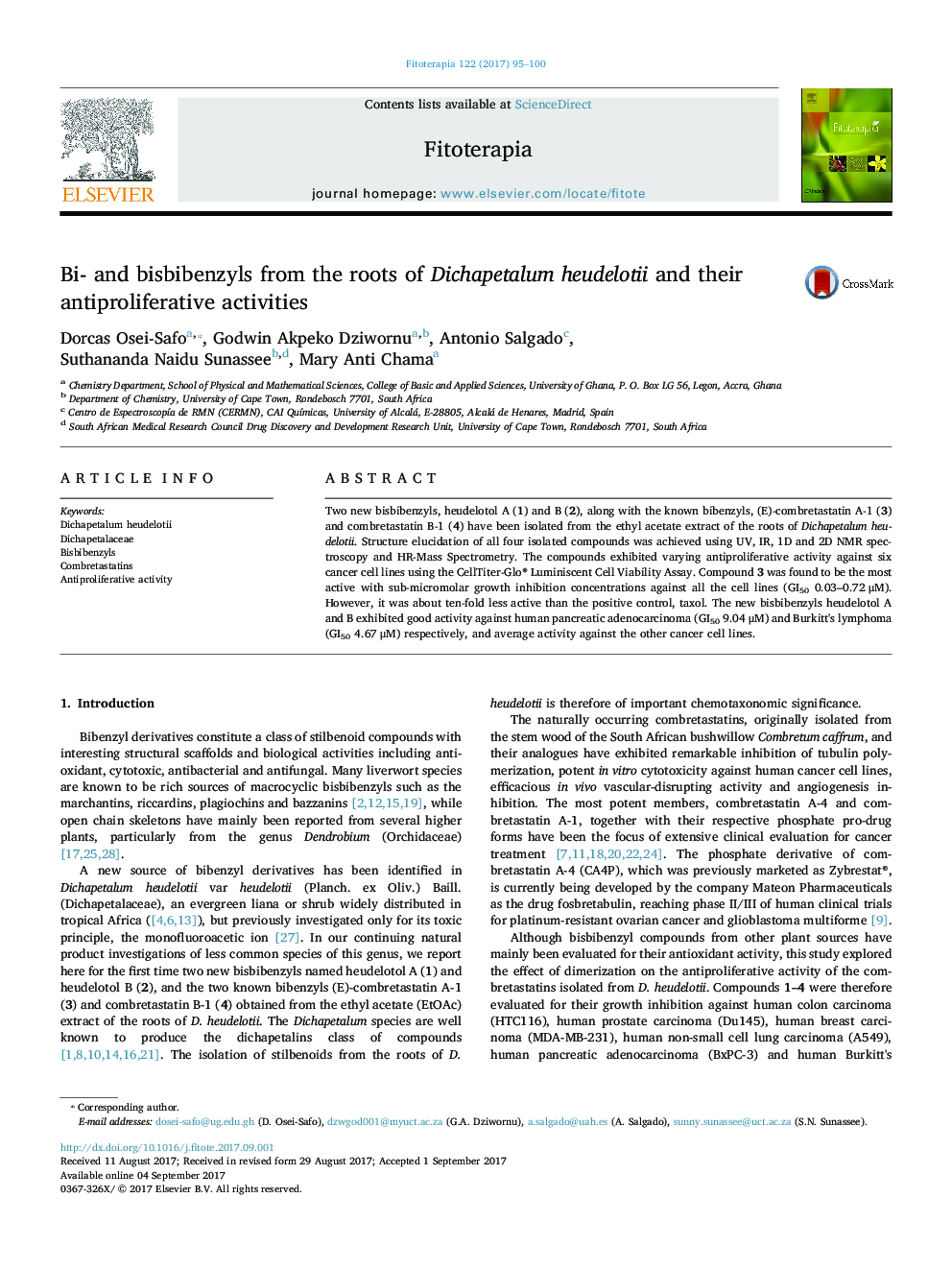| Article ID | Journal | Published Year | Pages | File Type |
|---|---|---|---|---|
| 5554991 | Fitoterapia | 2017 | 6 Pages |
â¢Two bisbibenzyls were isolated for the first time from the roots of Dichapetalum heudelotii.â¢D. heudelotii has been identified as another source of combretastatins.â¢(E)-combretastatin A-1 exhibited sub-micromolar activities (GI50 0.03 - 0.72 μM) against the six tested cell lines.â¢The bisbibenzyls exhibited good activities (GI50 9.04 μM and GI50 4.67 μM) against BxPC-3 and Namalwa, respectively.
Two new bisbibenzyls, heudelotol A (1) and B (2), along with the known bibenzyls, (E)-combretastatin A-1 (3) and combretastatin B-1 (4) have been isolated from the ethyl acetate extract of the roots of Dichapetalum heudelotii. Structure elucidation of all four isolated compounds was achieved using UV, IR, 1D and 2D NMR spectroscopy and HR-Mass Spectrometry. The compounds exhibited varying antiproliferative activity against six cancer cell lines using the CellTiter-Glo® Luminiscent Cell Viability Assay. Compound 3 was found to be the most active with sub-micromolar growth inhibition concentrations against all the cell lines (GI50 0.03-0.72 μM). However, it was about ten-fold less active than the positive control, taxol. The new bisbibenzyls heudelotol A and B exhibited good activity against human pancreatic adenocarcinoma (GI50 9.04 μM) and Burkitt's lymphoma (GI50 4.67 μM) respectively, and average activity against the other cancer cell lines.
Graphical abstractTwo bisbibenzyls, named heudelotol A and B, together with (E)-combretastatin A-1 and combretastatin B-1 were isolated from the roots of Dichapetalum heudelotii.Download high-res image (206KB)Download full-size image
